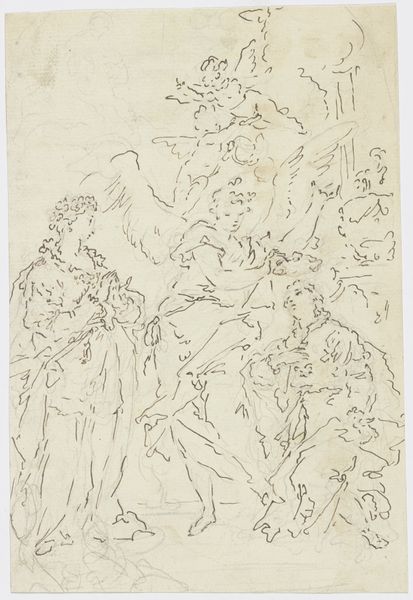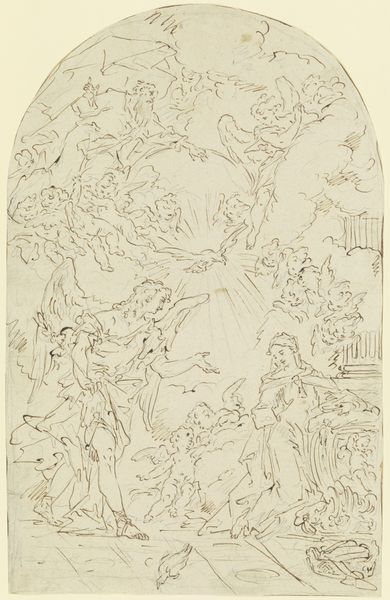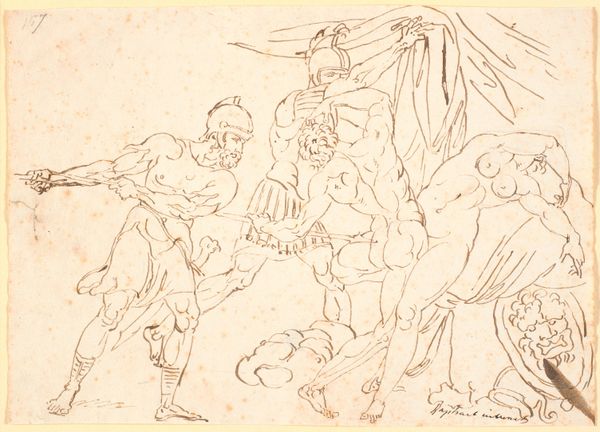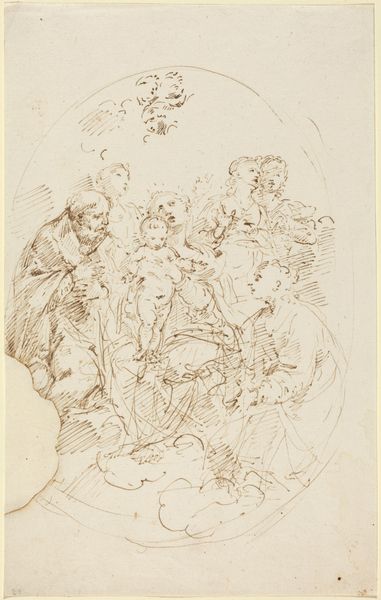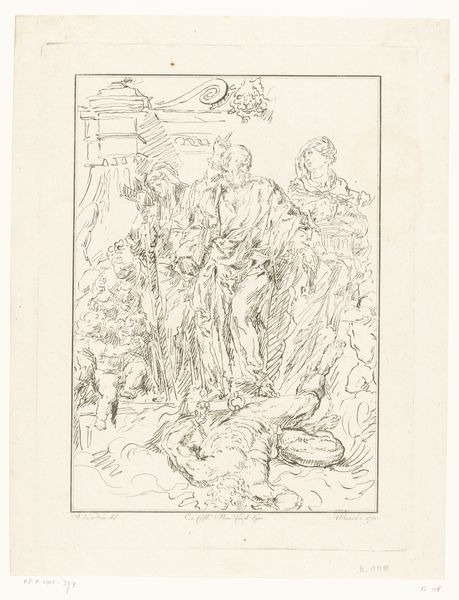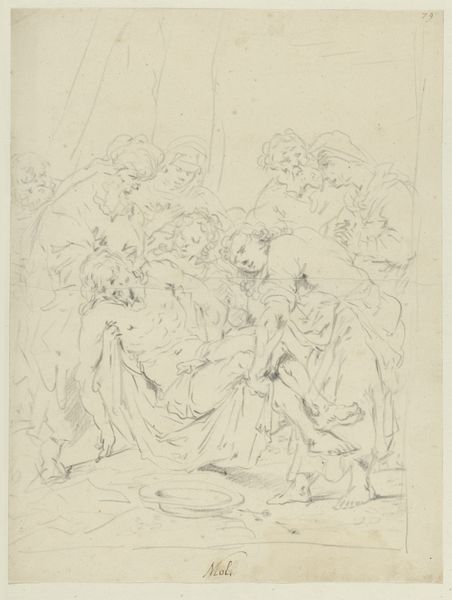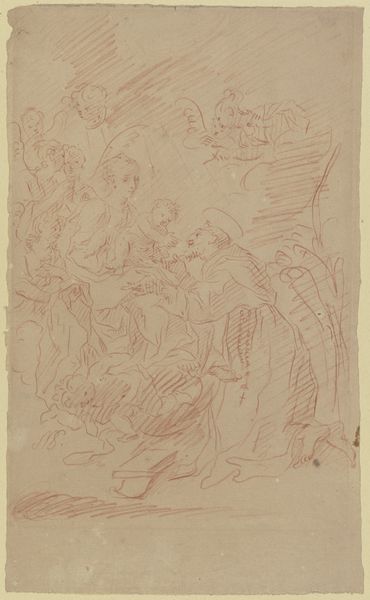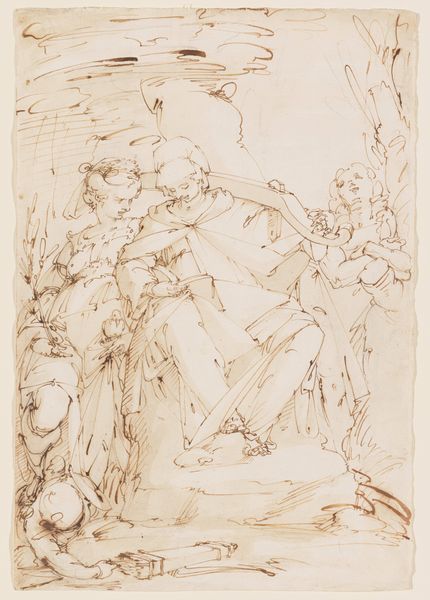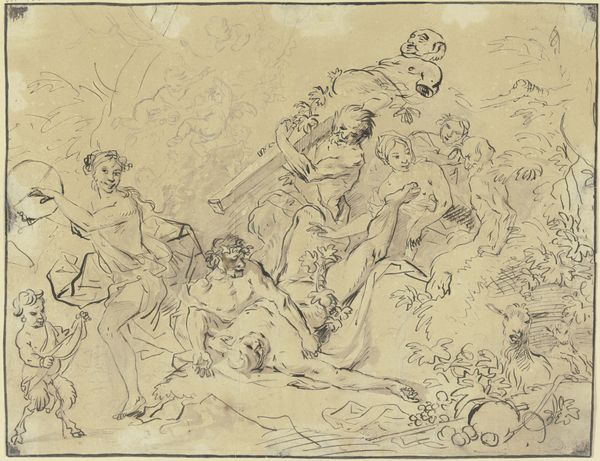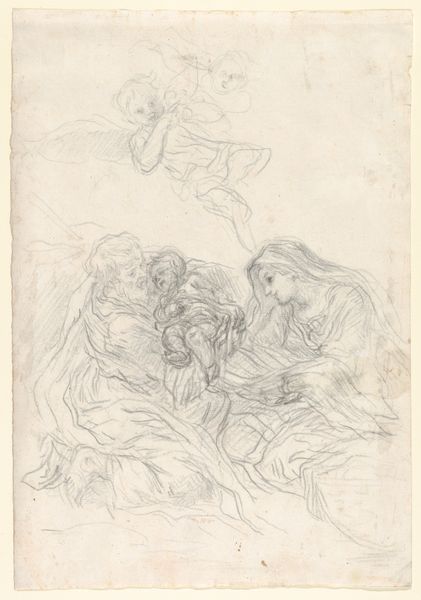
Madonna mit den Heiligen Joseph, Antonius von Padua und Johannes dem Täufer c. 1754 - 1755
0:00
0:00
drawing, ink, chalk
#
drawing
#
baroque
#
figuration
#
ink
#
chalk
#
15_18th-century
#
history-painting
Copyright: Public Domain
Editor: This is Gaspare Diziani's "Madonna with Saints Joseph, Anthony of Padua, and John the Baptist," dating from around 1754-1755. It's a drawing rendered in ink and chalk. The sketch-like quality gives it a fluid, almost dreamlike, atmosphere. What do you make of this piece? Curator: It certainly does have that ephemeral quality, doesn't it? For me, the beauty lies in its dynamism. Notice how Diziani hasn’t given us a finished, polished scene. Instead, he's inviting us into his creative process. It's a study, maybe for a larger altarpiece. I imagine Diziani rapidly sketching, chasing after an idea as it blossoms in his mind, you know? The chalk and ink blend beautifully to suggest a kind of divine light. Editor: Divine light is a great way to describe it. The way the figures sort of emerge from the page. Did the Baroque period influence his stylistic choices? Curator: Absolutely. The Baroque loved drama and emotion. See the swirling robes, the expressive gestures – particularly of St. John. He is the definition of Baroque passion! This wasn’t just about depicting religious figures; it was about creating a visceral, spiritual experience for the viewer. Do you think it succeeds in doing that? Editor: Definitely. Even though it’s "just" a sketch, the emotional energy comes through. The way they all connect, through sightlines or gestures – that's what really holds my attention. Curator: It's a fascinating peek behind the curtain, isn't it? Diziani shows us that art isn't just about the final product. It’s the energy of exploration that matters so very deeply. Editor: I see what you mean. I usually focus on completed works. Thinking about the artist’s process makes it come alive.
Comments
No comments
Be the first to comment and join the conversation on the ultimate creative platform.

